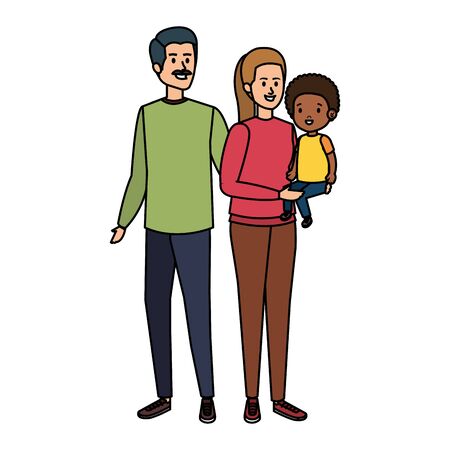Choosing Dog-Friendly Trails
How to Find the Perfect Trail for Your Pup
Picking the right trail is one of the most important steps to make your hiking adventure safe and fun for both your family and your dog. Not every trail in the U.S. is dog-friendly, so a little research goes a long way! Here’s how you can make sure you choose a trail that welcomes your four-legged friend and keeps everyone happy.
Key Considerations When Choosing a Trail
| Consideration | Why It Matters | What to Check |
|---|---|---|
| Local Regulations | Some parks and trails have rules about dogs—like leash laws or no-dog policies. | Check official park websites or call ahead. |
| Terrain & Difficulty | Certain terrains can be tough on paws or dangerous for smaller breeds. | Read trail descriptions and reviews; look for “easy” or “moderate” labels if you’re just starting out. |
| Wildlife Presence | Areas with bears, snakes, or ticks may need extra caution. | Ask rangers about common wildlife and bring necessary supplies (like tick prevention). |
| Trail Length & Shade | Puppies and senior dogs might not handle long or exposed hikes well. | Choose shorter trails with shade, especially in summer months. |
| Amenities | Access to water, waste stations, and parking can make the trip easier. | Review trail maps or user comments online. |
Researching Trails Online
The best place to start is by searching for “dog-friendly hikes near me” using sites like AllTrails, BringFido, or local park websites. These platforms often let you filter results specifically for dog access, leash requirements, and difficulty levels. User reviews can give you real-life tips from other pet parents, too!
Questions to Ask Before You Go:
- Are dogs allowed on this trail?
- Is there a leash policy?
- Are there natural hazards (steep drops, fast rivers)?
- Will there be plenty of shade and water access?
- How busy does the trail get during peak times?
If you’re unsure about a particular spot, don’t hesitate to call the ranger station—they’re usually happy to help families plan safe adventures with their furry companions!
2. Packing the Essentials for Your Pup
When youre hitting the trails with your furry family member, packing the right gear is a must. American hiking standards are all about safety, comfort, and protecting nature, so having the proper supplies ensures a fun and responsible adventure for everyone. Here’s what you’ll need to keep your dog happy, healthy, and ready for the great outdoors:
Must-Have Gear Checklist
| Item | Why Its Important | Tips for Use |
|---|---|---|
| Water & Collapsible Bowl | Dogs can get dehydrated quickly, especially on warm days or long hikes. | Pack plenty of fresh water and a lightweight bowl. Offer water every 30-45 minutes. |
| Dog-Friendly Snacks | Your pup burns lots of energy on the trail and will need fuel just like you. | Bring high-protein treats or kibble in a resealable bag. Avoid human snacks that could be harmful. |
| Leash & Harness | Most U.S. trails require dogs to be leashed to protect wildlife and other hikers. | A sturdy leash (6 feet is standard) and a comfortable harness help you stay in control and safe. |
| Paw Protection (Dog Booties) | Rough terrain, hot rocks, or snow can hurt sensitive paws. | Break in booties at home first. Carry extras in case one gets lost on the trail. |
| Waste Bags | Packing out your dog’s waste keeps trails clean and natural habitats safe. | Certain parks have “Leave No Trace” policies—always bring more bags than you think you’ll need! |
| First-Aid Kit (Dog-Specific) | Cuts, scrapes, or ticks can happen anytime outdoors. | Add items like tweezers, bandages, antiseptic wipes, and extra vet info to your kit. |
| ID Tags & Microchip Info | If your dog wanders off, up-to-date info helps them get home safely. | Double-check tags before every hike. Some families use GPS collars for added security. |
Pro Tip: Pack Smart & Light
If your dog is used to wearing a backpack, let them carry their own supplies—but only up to 10%–12% of their body weight. Always check pack straps for comfort before setting out. With these essentials in your daypack, both you and your four-legged pal will be ready for anything the trail throws your way!

3. Prepping Your Dog for the Hike
Conditioning Your Dog Physically
If your pup is new to hiking, don’t expect them to tackle tough trails right away. Just like humans, dogs need time to build up their strength and stamina. Start with short neighborhood walks or easy nature paths, gradually increasing the distance and difficulty over a few weeks. This helps your dog get used to walking on uneven surfaces and builds up their endurance for longer adventures.
Sample Conditioning Plan
| Week | Activity | Distance/Time |
|---|---|---|
| 1 | Neighborhood Walks | 15-20 minutes |
| 2 | Paved Park Trails | 30 minutes |
| 3-4 | Easy Nature Trails | 45-60 minutes |
| 5+ | Hiking Moderate Trails | 1-2 hours (as tolerated) |
Updating Vaccinations & Health Checkups
Before you head out, make sure your dog is up-to-date on all essential vaccinations. Hiking exposes your pup to wildlife, other dogs, and different environments where diseases can spread more easily. Visit your vet for a quick health checkup, discuss your hiking plans, and ask about any region-specific vaccines or preventative care that might be needed.
Flea and Tick Prevention Essentials
The outdoors are home to ticks, fleas, and other pests that can harm your dog. Always use veterinarian-recommended flea and tick prevention products before hitting the trail. You can choose from topical treatments, collars, or oral medications based on what works best for your pet. Don’t forget to check your dog thoroughly after each hike—especially around the ears, underbelly, paws, and tail—for any unwelcome hitchhikers.
Common Flea & Tick Prevention Methods in the U.S.
| Type of Prevention | Description | How Often to Use |
|---|---|---|
| Topical Treatments (spot-on) | Drops applied between shoulder blades; repels/kill fleas & ticks. | Monthly |
| Oral Medications | Pill or chewable that protects from the inside out. | Monthly or every 3 months (varies by brand) |
| Collars | Chemical collar worn around neck; long-lasting protection. | Replace every 6-8 months (check product instructions) |
| Naturals Sprays/Shampoos | Bathe or spray before/after hikes for extra defense. | As needed before hikes/outings |
Practicing Trail Etiquette Beforehand
Your dog should know basic commands like “sit,” “stay,” “come,” and “leave it” before hitting the trail. Practice these commands in distracting environments so your dog will listen even if there are squirrels or other hikers around. In the U.S., leash laws are common on most public trails—make sure your dog is comfortable walking calmly on a leash. It’s also important to teach your dog not to approach strangers or wildlife without permission. Good trail manners help keep everyone safe and happy!
4. Trail Etiquette and Safety
Understanding Leash Laws
Before heading out, always check the leash rules for your chosen trail. Many U.S. parks and trails require dogs to be leashed at all times, but some areas allow off-leash hiking if your dog is under voice control. Following these rules helps everyone have a safe and enjoyable experience.
| Trail Type | Leash Requirement | Notes |
|---|---|---|
| National Parks | Leash required (usually 6 feet max) | Strictly enforced; hefty fines for violations |
| State Parks | Varies by state—check before you go | Some allow off-leash in specific areas |
| Local Trails | Often require leashes | Look for posted signs or online info |
| Off-Leash Parks | No leash needed within boundaries | Your dog must be well-trained and responsive |
Managing Interactions with Others
When you meet other hikers or pets on the trail, always yield the right of way and keep your dog close to your side. Not everyone is comfortable around dogs, so it’s polite to step aside and let others pass if needed. Ask before allowing your dog to greet another dog or person—some may not appreciate a surprise hello!
Leave No Trace Principles with Pets
It’s important to keep nature clean for everyone. Always pick up after your dog and carry waste bags with you. Stick to marked trails to protect plants and wildlife. Dogs can disturb local animals, so keeping them on the path helps minimize their impact.
Quick Leave No Trace Tips for Dog Owners:
- Bring enough waste bags and use them every time.
- Dispose of bags in proper trash bins—not left on the trail.
- Prevent your dog from chasing wildlife or digging up plants.
- Avoid letting your pup swim in protected water sources.
Keeping Your Dog Safe from Hazards on the Trail
The outdoors is full of surprises, so watch out for things that could harm your furry friend. Be aware of poisonous plants, ticks, snakes, or sharp rocks. Bring plenty of water for both you and your dog—never let them drink from standing ponds or puddles, which could carry harmful bacteria.
| Potential Hazard | What To Do | Common Areas Found |
|---|---|---|
| Poisons Plants (e.g., Poison Ivy) | Avoid overgrown edges; know what they look like. | Wooded paths, forest floors |
| Ticks & Fleas | Use preventative treatments; check fur after hiking. | Tall grass, wooded areas |
| Wildlife Encounters (Snakes, Coyotes) | Keep dog leashed; make noise as you walk. | Rocky or brushy areas, open fields |
| Sharp Objects (Rocks, Sticks) | Avoid rough terrain if possible; check paws often. | Bare trails, riverbanks, forests |
| Bacteria in Water Sources | Carrie clean water; don’t let dog drink from streams or puddles. | Lakes, ponds, puddles along trail |
If you follow these simple tips for trail etiquette and safety, hiking with your dog will be fun and safe for both your family and everyone else sharing the path!
5. Handling Emergencies on the Trail
What to Do If Your Dog Gets Injured
If your pup gets hurt while hiking, stay calm and assess the situation. Carry a basic canine first-aid kit in your backpack, including items like bandages, antiseptic wipes, tweezers (for removing thorns or ticks), and vet wrap. Clean any wounds gently and apply pressure if there’s bleeding. For sprains or limping, help your dog rest and avoid putting weight on the injured leg. If the injury is severe or you’re unsure what to do, call your vet or the nearest emergency animal clinic for advice.
Canine First-Aid Kit Essentials
| Item | Purpose |
|---|---|
| Bandages & Gauze | Stop bleeding, cover wounds |
| Antiseptic Wipes | Clean cuts and scrapes |
| Tweezers | Remove splinters or ticks |
| Vet Wrap/Tape | Secure bandages without sticking to fur |
| Paw Balm | Soothe cracked pads |
| Emergency Blanket | Warmth for shock or cold weather |
What to Do If Your Dog Encounters Wildlife
If you run into wildlife—like snakes, bears, or coyotes—keep your dog leashed and close by. Don’t let your dog chase or approach wild animals. Make noise so wildlife knows you’re there; most will avoid you. If an animal threatens your dog, back away slowly and leave the area calmly. Always carry bear spray in areas where large predators are present (check regulations), and know how to use it safely.
What to Do If Your Dog Gets Lost
Losing sight of your pup can be scary. Immediately stop and call out for them using a happy tone—dogs often respond better to positive voices than panic. Stay put for a few minutes; dogs often circle back to their last known spot. If they don’t return:
- Blow a whistle or squeak a favorite toy.
- Ask hikers nearby if they’ve seen your dog.
- Mark your location with something that smells like you (a shirt, hat) so your dog can find their way back.
- If possible, have someone stay at the trailhead in case your dog returns there.
- Contact local animal control and park rangers right away—they’re experienced with lost pets.
Important Contacts for Emergencies (Sample Table)
| Service | Contact Info (Example) |
|---|---|
| Local Animal Control (U.S.) | (Check city/county website or 311 hotline) |
| National Park Ranger Station | (Number listed at park entrance/visitor center) |
| 24/7 Emergency Vet Clinic | (Google “emergency vet near me” before you go) |
| ASPCA Poison Control Hotline | (888) 426-4435 (for toxins & bites) |
Emergency Preparedness Tips Before You Hike
- ID Tags: Make sure your dog has up-to-date ID tags with your phone number.
- Microchip: Double-check that microchip info is current.
- Take Recent Photos: Bring clear photos of your dog on your phone for quick sharing if needed.
- Share Your Plans: Let someone at home know where you’re hiking and when you expect to be back.
- Download Offline Maps: Cell service can be spotty; offline maps help if you need to search for your pet.
- Know Local Rules: Some parks require dogs on leash at all times—this helps prevent getting lost or hurt!
Your adventure should be fun and safe for both you and your four-legged friend! Being prepared means you’ll know exactly what to do if things go sideways on the trail.


